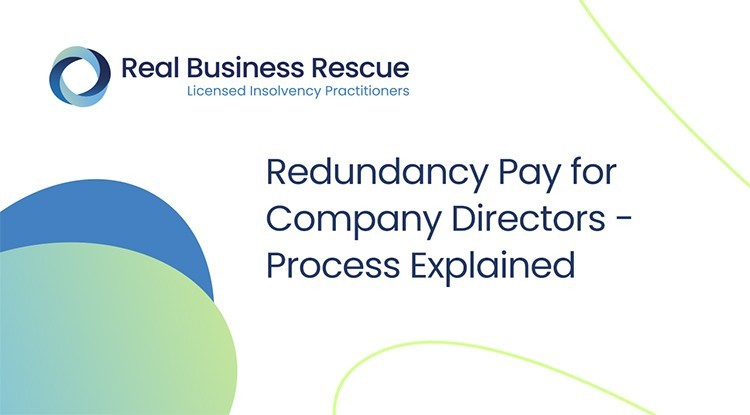Exactly How to Manage Redundancy Pay If Company Goes Bust: Key Info for UK Employees
Exactly How to Manage Redundancy Pay If Company Goes Bust: Key Info for UK Employees
Blog Article
Investigating the Interaction Between Firm Redundancy and Business Versatility for Future Development
In the vibrant landscape these days's service world, the detailed connection between firm redundancy and business adaptability arises as a vital element for continual growth and success. Firms usually encounter the challenge of striking a fragile balance in between maintaining a level of redundancy to mitigate dangers and fostering flexibility to respond quickly to the ever-evolving market needs. This delicate interaction holds the key to not just surviving in stormy times but likewise thriving when faced with unpredictability. As we explore the diverse measurements of this interaction, interesting understandings into exactly how companies browse these complexities to pave the method for future development await.
Relevance of Company Redundancy
Company redundancy is an important aspect that boosts business resilience and reduces operational dangers. By integrating redundancy procedures within the business structure, business can better stand up to unforeseen interruptions and fluctuations in business atmosphere. Redundancy functions as a tactical buffer, allowing companies to adjust and respond successfully to unforeseen obstacles without endangering crucial procedures.
One secret aspect of the significance of company redundancy is its role in making certain connection throughout times of crisis. When confronted with abrupt adjustments or emergency situations, redundant systems, resources, or workers can action in to keep crucial features and avoid extensive disruptions. This connection not only safeguards the company's reputation and consumer count on but likewise reduces monetary losses and operational downtime.

Methods for Business Flexibility

One more crucial technique is spending in modern technology and framework that can sustain adaptability and scalability. Carrying out electronic devices, automation, and information analytics can streamline operations, improve effectiveness, and supply beneficial insights for notified decision-making. In addition, developing versatile business frameworks that permit for fast adjustments to market dynamics and customer needs is essential for staying competitive in a rapidly developing environment. By proactively identifying potential see this page disruptions and opportunities, organizations can proactively adapt and thrive in an ever-changing business landscape.
Balancing Redundancy and Flexibility
Attaining a harmonious equilibrium in between functional redundancy and organizational flexibility is paramount in browsing the intricacies of a dynamic organization atmosphere. Redundancy within a company gives a safeguard, guaranteeing connection and stability in operations. However, an unwanted of redundancy can result in inefficiencies and prevent adaptability to transforming market conditions. On the various other hand, organizational flexibility enables firms to react immediately to external interruptions and seize brand-new opportunities. Striking the ideal balance between redundancy and flexibility is a delicate procedure that needs a deep understanding of the organization's goals, sector dynamics, and danger resistance.
To attain this balance, business need to carry out routine analyses of their procedures to recognize locations where redundancy is necessary for risk mitigation and where adaptability can drive advancement and growth. Carrying out adaptable frameworks, cultivating a society of constant understanding and renovation, and urging open interaction throughout all levels of the organization are essential strategies to balance redundancy and flexibility successfully. By lining up these two important aspects, business can position themselves for sustainable growth from this source and success in an ever-changing business landscape.
Study on Adaptation Success
In examining circumstances of successful business adaptation, it comes to be obvious that the interplay in between operational redundancy and flexibility is a defining aspect in shaping resilient organizations. One engaging situation study is that of Netflix. Initially a DVD rental solution, Netflix demonstrated remarkable flexibility by transitioning right into a streaming platform when digitalization interfered with the market. By strategically spending in modern technology and material creation, Netflix not just prospered but endured in a rapidly advancing market. An additional standout example is Amazon. Starting as an on the internet bookstore, Amazon continually adapted its service model, increasing into varied sectors such as cloud computer and expert system. This adaptability allowed Amazon to remain in advance of competitors and fulfill changing customer needs. Finally, Adobe gives a noteworthy image of effective adjustment. The business changed from selling software application licenses to a subscription-based version, guaranteeing reoccuring income streams and improved consumer engagement. These situation researches highlight the value of operational redundancy combined with business flexibility in fostering long-lasting development and competition.
Building Durability for Future Growth
Building resilience for future development needs a strategic placement of operational processes with market characteristics and emerging fads. Business must adjust to changing atmospheres by fostering a society of flexibility, technology, and constant improvement.
Additionally, fostering solid relationships with stakeholders, such as consumers, workers, distributors, and the neighborhood, is necessary for maintaining and weathering uncertainties depend on and support during stormy times. Efficient interaction and transparency play a crucial role in structure durability, as they aid align assumptions and promote collaboration in browsing unpredictabilities.
Additionally, companies require to prioritize learning and advancement campaigns to upskill employees and furnish them with the needed devices to adapt to altering scenarios. By spending in their workforce, companies can improve their flexibility and agility, inevitably strengthening their durability for sustainable future development.
Verdict

In the vibrant landscape of today's company explanation world, the complex relationship between firm redundancy and organizational flexibility emerges as a vital factor for sustained development and success. Companies commonly face the difficulty of striking a fragile equilibrium between keeping a degree of redundancy to reduce threats and promoting flexibility to react swiftly to the ever-evolving market demands.To attain this equilibrium, companies need to perform normal assessments of their procedures to determine areas where redundancy is needed for danger reduction and where versatility can drive development and growth.In final thought, the interaction between business redundancy and business adaptability is crucial for future growth. Structure strength via a mix of redundancy and adaptability will guarantee that business are prepared for the difficulties of the future.
Report this page